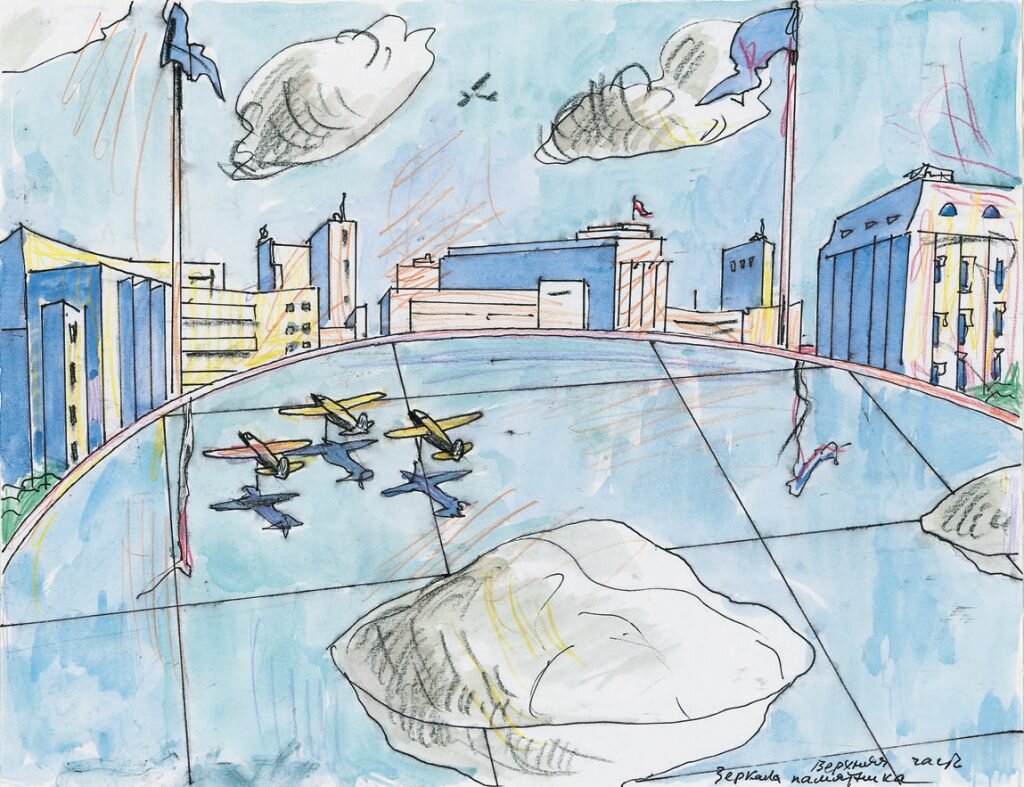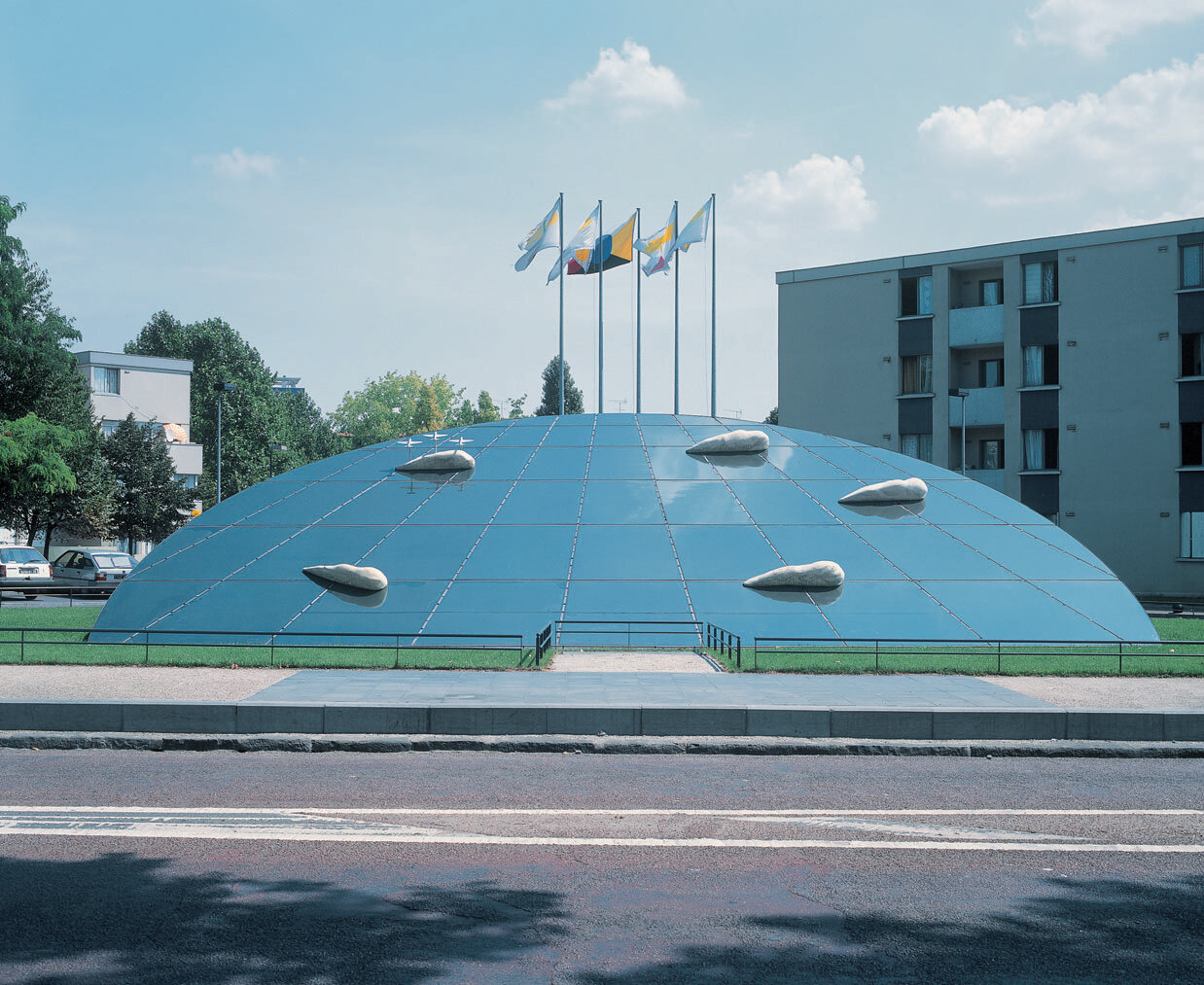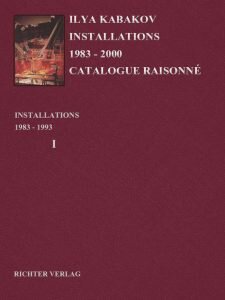Monument to the Division of Normandie-Nieman
YEAR: 1991
CATALOGUE NUMBER: 46
PROVENANCE
The artist
Commissioned by the City of Orly, co-financed by CNAP, Conseil régional, on the occasion of an operation DSQ
Collection City of Orly, France
EXHIBITIONS
Orly, Avenue des Martyrs de Châteaubriant
Permanent installation, 29 Jun 1991
DESCRIPTION
The place where this monument was to be erected was the center of the city of Orly, located not far from Paris. But this center is traversed by a large highway with an incessant flow of cars going to and from Paris. The buildings in this place are not very tall, representing the architecture of the 1950’s. It made sense to make something that would be in contrast to this gray surrounding, and at the same time, would stand up against the constant passing of cars right next to the monument. At the base of the concept for the monument lies the idea of a piece of the sky that has fallen and plunged into the ground, or the theme of an object lying on the ground that belongs to some other lofty world, an object that is alien in its nature to the place where it has wound up.
And so the main element of the monument is a slanted, semi-circular segment of a mirror with a length at its base of 17 meters and a maximum height of 9 meters. It is slanted in such a way that the mirror reflects the sky from any point on it. Five white reliefs are attached to its surface that, from afar, look like five clouds floating across the sky. This effect is achieved because the reliefs, being reflected in the mirror, become round, and it is as though they are suspended in the space of this inverted sky. What arises is a strange, almost non-material effect. In addition to these ‘clouds,’ three small airplanes, a kind of small squadron of three machines, are attached to the upper oval edge of the mirror as though they are ‘flying.’
The Layout of the Site
The slanted, semi-circular figure stands out sharply in contrast to the vertical, rectangular buildings as well as to the horizontal lanes of the highway. The ‘mirror’ was also placed on the grass in a semi-round form, and a semi-circular path for pedestrians and for cars to pull up to the buildings runs around the grassy area. A path and a small sandy area for erecting a memorial plaque indicating to what this monument is dedicated were cut out directly in front of the mirror on the grass. The path to the monument is united with the common pedestrian path running parallel to the highway. Enormous old trees grow on both sides of the path along the highway, forming an interval in the place where the monument is situated. Flagpoles are erected behind the monument, as well as two poles for lighting the monument during nighttime.
CONCEPT OF THE INSTALLATION
The monument is erected in honor of the famous airborne division Normandie-Niemen. During the Second World War, a division of pilots was formed whose airplanes bombed enemy positions along the front line as well as deep into the territory of Germany. The division was based in Normandie. Having bombed their targets, the planes would land in the Niemen region, get a fresh supply of bombs, and head back in the opposite direction, fulfilling the same mission on the way. Russian pilots and technical personnel participated in numerous operations of the division. During these very dangerous raids over enemy territory, a large number of French pilots, among whom were many representatives of aristocratic families, were shot down. In memory of the pilots who perished in battle, the French and Soviet governments decided to erect a monument in two places, in France, and in the USSR: in France, it was to be in Orly, near Paris. In the USSR it was to be in ‘Star City’ near Moscow. Moreover, one of the conditions for erecting the monuments was that the monument in France was to be designed by a Soviet artist, and the one in the USSR, correspondingly, by a French artist.
Images
Literature







